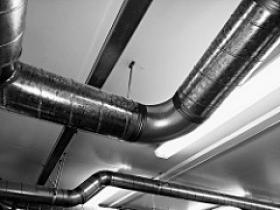Tight Ducts Will Help Keep the Heat Inside Your Building
Over the course of an average winter, most commercial buildings will spend thousands of dollars on heating. With this much money at stake, it pays to make sure your HVAC system is working at its most efficient and that all components are kept in the best condition possible. Your commercial ductwork can be either a means for keeping your HVAC system efficient or a source of excessive heat loss and waste. The following information will help you understand the need for tight ducts in a commercial space and how to ensure ductwork is working to your best advantage.
The Role of Tight Ducts
Your building’s furnace, boiler, or heat pump produces the warm air that keeps your building’s interior area comfortable during the colder season. This air, however, needs a way to get from the main unit to the rooms inside your building. The ductwork provides the pathway that the warm air travels on its way to the indoor spaces that need heating. Without ductwork, the air would have nowhere to go.
The ductwork is a lengthy network of large pipes extending from your HVAC equipment to areas throughout your building. It is usually either round or square and is often mounted near the ceiling. The duct pipes may be wrapped with insulation or other material to help maintain the temperature of the air moving through them.
Tight ducts are necessary to ensure that the conditioned air inside the ductwork gets where it’s going. If there are loose connections, broken seals, damaged/missing duct sections or other problems, the conditioned air produced by your HVAC equipment will leak out and escape unused. This creates a situation in which you not only lose the air you’ve already paid to heat, but you also have to pay to heat more air to make up for the loss. This is extremely wasteful of both energy and money.
Signs of Duct Problems
You may have duct problems in your building if you or your tenants have noticed any of these problems:
- Unexpected and unexplained increases in your heating bills that can’t be tied to seasonal drops in temperature.
- Trouble keeping particular rooms or areas in the building warm enough.
- Increased amounts of dust or other particulates in the building’s air.
- Visible damage or related problems with ductwork.
Achieving Tight Ducts
Tight ducts can alleviate these problems while ensure that your heating costs are as low as possible. In most cases, it is advisable to contact your HVAC professional for expert ductwork inspection and repair.
- Repair damage and reseat any loose or disconnected sections. Ducts can be damaged over time by gravity, accidents, animals, and other factors. Check ductwork for damage, missing sections, or disconnection sections and ensure the problems are repaired.
- Make sure all ductwork sections fight tightly together. In some cases, the ends of ductwork sections are intended to fit snugly inside adjoining sections. In other cases, sections are mechanically connected with screws, rivets, or other fasteners.
- Ensure all duct connections are sealed. Ductwork connections are often sealed with a substance called mastic, which is a rubbery sealant specially designed for ductwork. It is extremely effective at preventing air leaks at the connection points between duct sections. Metal tape is sometimes used for the same purpose. Standard duct tape is not recommended because the adhesive can dry out and allow the tape the fall away.
- Insulate ductwork. Ductwork should be insulated to prevent the loss of heat through the material of the ductwork itself. Ducts are often made of a relatively thin metal that can allow heat to radiate through the material.
Our goal is to help educate our customers about Plumbing, HVACR, Fire Protection, and Alarm Systems in Mechanical, Commercial, and Residential settings. For more information on how to maintain tight ducts and keep your building’s ductwork sealed and efficient, and to view projects we’ve worked on, visit our website!
Image Credit: “will668/Flickr”








